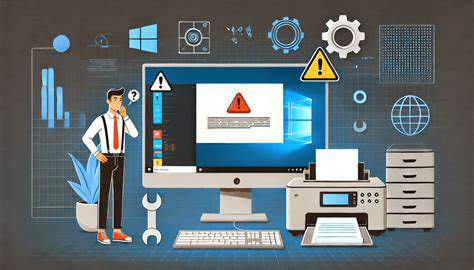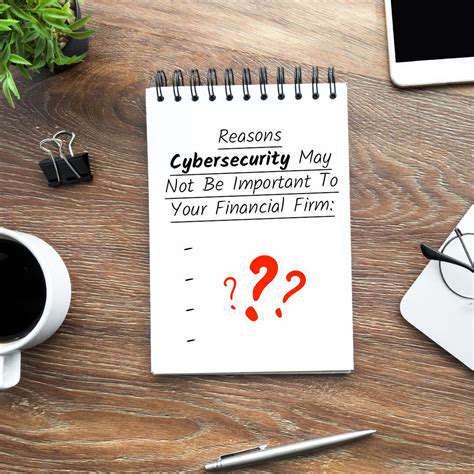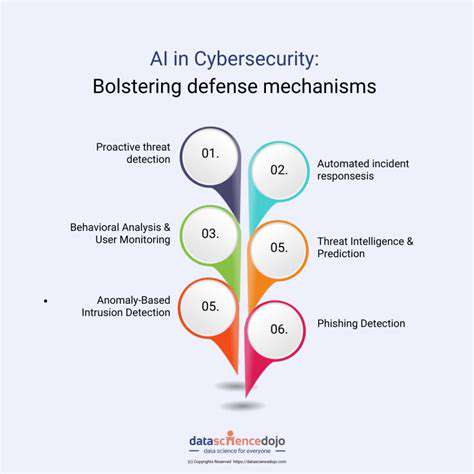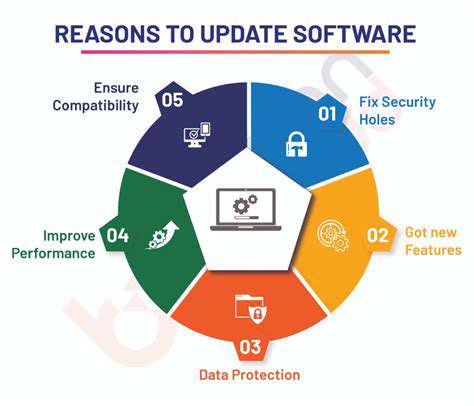How to Secure Your Smartphone: iOS & Android Tips
Understanding the Threats
Protecting your digital life in the age of interconnected devices demands a proactive approach. Modern threats are multifaceted, ranging from simple phishing scams and malware infections to sophisticated data breaches targeting personal and financial information. Understanding the variety of attacks, from social engineering tactics designed to trick you into revealing sensitive data to sophisticated hacking attempts, is the first step in building a robust defense. Recognizing these threats is crucial for implementing effective countermeasures and safeguarding your digital assets.
Cybercriminals are constantly evolving their methods, utilizing increasingly sophisticated techniques to exploit vulnerabilities. Staying informed about the latest threats, including zero-day exploits and emerging malware variants, is essential for maintaining a high level of security. Continuous learning about these evolving tactics is paramount to staying ahead of potential threats and protecting your sensitive data.
Implementing Strong Security Measures
Implementing strong security measures is fundamental to safeguarding your digital life. This includes employing robust passwords, enabling two-factor authentication where available, and regularly updating software and applications. Strong passwords, ideally unique to each account, should be complex and incorporate a mix of upper and lowercase letters, numbers, and symbols. Password managers can significantly enhance this process, storing and managing your passwords securely.
Beyond passwords, enabling two-factor authentication adds an extra layer of security. This method requires a second verification step, typically a code sent to your phone or email, making it significantly harder for unauthorized access even if a password is compromised. Regularly updating your software and applications is equally important, as these updates often include critical security patches that address vulnerabilities and prevent exploitation.
Securing Your Smartphone
Your smartphone is a critical entry point to your digital life, often containing sensitive personal information, financial data, and access to various accounts. Therefore, securing your smartphone is paramount. Employing a strong passcode or biometric authentication, enabling device encryption, and using a reputable antivirus application are essential steps. This will help to protect your data if your device is lost or stolen, ensuring that unauthorized access is thwarted.
Furthermore, be mindful of the apps you install and the permissions you grant. Thoroughly review app permissions before installation to understand how your data may be used. Regularly checking your app usage and data sharing settings will help you maintain control over your smartphone security. By taking these proactive steps, you can significantly reduce the risks associated with smartphone use and protect your personal information.
Strong Passwords and Multi-Factor Authentication: The First Line of Defense
Choosing Strong Passwords
Creating strong passwords is paramount to securing your online accounts. A strong password is more than just a few random characters; it's a carefully crafted combination designed to withstand sophisticated hacking attempts. Instead of relying on easily guessable information like birthdays or pet names, prioritize unique and complex passwords. A mix of uppercase and lowercase letters, numbers, and symbols significantly increases the password's strength. Aim for a password length of at least 12 characters for optimal security. Consider using a password manager to generate and store strong, unique passwords for all your accounts, eliminating the need to memorize them and reducing the risk of reusing weak passwords.
Remembering these complex passwords can be challenging. A password manager can effectively solve this problem by generating and storing strong, unique passwords for each of your accounts. This approach significantly reduces the risk of reusing weak passwords, which is a common vulnerability. Password managers also offer the benefit of securely storing these passwords, eliminating the need to memorize them. This can greatly improve your overall online security posture and reduce the risk of unauthorized access to your sensitive information.
Implementing Multi-Factor Authentication (MFA)
Multi-factor authentication (MFA) adds an extra layer of security to your online accounts by requiring more than just a username and password. This extra verification step significantly increases the difficulty for attackers, making it much harder for them to gain access even if they manage to obtain your password. MFA often involves receiving a one-time code via text message, email, or a dedicated authenticator app. This means that even if an attacker has your password, they still need to successfully bypass the additional verification step to access your account.
Activating MFA on all your important accounts is a crucial step in bolstering your online security. This proactive measure significantly minimizes the risk of unauthorized access, safeguarding your personal information and sensitive data. It's a relatively simple process and can be easily implemented on most platforms, providing an effective defense against unauthorized login attempts. By incorporating MFA into your security practices, you substantially enhance the protection of your online accounts and significantly reduce the risk of data breaches.
Consider enabling MFA on all your accounts, particularly those associated with financial institutions, email providers, and social media platforms. This extra layer of security can be a game-changer in protecting your sensitive information from potential breaches. You should also regularly update your security settings and be aware of any new security protocols or updates that may be available for the accounts you use regularly.
By diligently implementing both strong passwords and MFA, you create a formidable barrier against unauthorized access. This dual approach significantly enhances your overall online security, safeguarding your valuable data and personal information from malicious actors.

Identifying your aspirations begins with a deep dive into your motivations. What truly drives you? Are you driven by a desire for financial security, a passion for creativity, or a yearning for social impact? Understanding these underlying motivations provides a crucial foundation for defining meaningful aspirations. It helps you recognize the values and principles that guide your choices and direct your actions.
Leveraging Device Security Features: Built-in Protection
Understanding Built-in Security Features
Smartphones offer a range of built-in security features designed to protect your data and privacy. These features, often overlooked or underutilized, can be a crucial first line of defense against threats. Understanding how these features work and how to activate them is a significant step in securing your device. A fundamental part of responsible smartphone ownership involves proactively utilizing these pre-installed tools.
Password Protection and Biometrics
Strong passwords are essential, but modern smartphones often go beyond simple passwords. Biometric authentication, such as fingerprint scanners or facial recognition, provides an extra layer of security. Activating these features can significantly reduce the risk of unauthorized access, even if a password is compromised. Implementing these methods creates a robust defense against unauthorized access to personal data stored on the device.
Using complex passwords and enabling biometrics are crucial for added security. The combination of these safeguards significantly strengthens your device's defenses.
Device Management and Control
Features like device administrators and remote wipe options allow you to manage your device from a distance and erase data if it's lost or stolen. Proper configuration of these tools provides a powerful way to recover your data or prevent unauthorized use in case of loss. Activating these features empowers you to retain control over your device, even when it's out of your immediate possession.
App Permissions and Security
Smartphones often ask for permissions to access various aspects of your device. Understanding and controlling these permissions is vital. Carefully review app permissions before granting access. Granting unnecessary permissions can expose your data to potential threats. A proactive approach to managing app permissions is a critical aspect of maintaining your device's security.
Software Updates and Security Patches
Regular software updates often contain critical security patches. Keeping your operating system and apps updated is essential for addressing vulnerabilities and staying ahead of potential threats. These patches often fix critical bugs and vulnerabilities that could be exploited by malicious actors. Regular updates are a proactive measure in maintaining a secure device.
Data Encryption and Privacy Settings
Data encryption, often available in modern smartphones, protects your data even if the device is lost or stolen. This feature scrambles the data on your phone, making it virtually unreadable to unauthorized individuals. Understanding and configuring privacy settings on your device can further enhance your security. Privacy settings allow you to control what data your apps have access to and how your data is shared.
Regular Security Audits and Awareness
Periodically reviewing your device's security settings and utilizing security apps can help you identify potential weaknesses. Regular audits can help prevent unauthorized access and ensure you're taking all possible precautions. Developing a security-conscious mindset and regularly checking for vulnerabilities is an essential part of responsible device ownership. Staying informed about new threats and vulnerabilities is crucial to keeping your device safe.
Beyond the Basics: Protecting Your Privacy and Data

Understanding Comprehensive Protection
Protecting yourself from harm extends beyond the simple act of securing your belongings. It encompasses a multifaceted approach to personal safety, encompassing both physical and emotional well-being. This involves developing strategies to navigate potentially dangerous situations, understanding the risks in your environment, and taking proactive steps to mitigate those risks. A comprehensive approach considers all aspects of your safety and security. This includes recognizing the warning signs of potential danger and knowing how to respond effectively.
A crucial element of comprehensive protection is proactive preparation. This means not just reacting to threats, but anticipating them and developing strategies to prevent them from arising in the first place. By understanding the potential risks in your daily life, you can take preventive measures to reduce the likelihood of harm occurring. This proactive approach involves vigilance, awareness, and a calculated understanding of your surroundings.
Physical Safety Measures
Physical safety measures are critical for safeguarding yourself from direct threats. This includes awareness of your surroundings, understanding how to assess potential dangers, and having a plan for responding to threatening situations. Knowing how to safely navigate through challenging environments and being able to identify potential hazards are essential skills for maintaining your physical safety.
Physical security measures such as locking doors and windows, and utilizing security systems, are also crucial components of a comprehensive strategy. The use of personal safety devices such as alarms or pepper spray can also significantly enhance your ability to defend yourself against physical threats. Having a reliable method of communication, such as a personal emergency response system (PERS), provides a way to quickly contact help in an emergency.
Emotional Well-being and Safety
Emotional safety is just as important as physical safety. It involves protecting yourself from emotional harm, recognizing unhealthy relationships, and setting boundaries to ensure your emotional well-being. This includes recognizing the signs of emotional abuse or manipulation and knowing how to respond appropriately. It’s also about recognizing and managing your own emotional responses to stressful situations.
Building strong support networks and practicing self-care are vital components of emotional safety. Talking to trusted friends, family members, or professionals about your concerns can offer invaluable support and guidance. Additionally, taking time for yourself and engaging in activities that promote relaxation and well-being are crucial for maintaining your emotional stability and resilience. Prioritizing your mental health is an essential aspect of comprehensive safety.
Protecting Your Online Presence
In today's digital age, protecting your online presence is an integral part of comprehensive safety. This includes safeguarding your personal information, understanding online risks, and being aware of the potential dangers of sharing too much personal data. Knowing how to manage your online accounts securely and being cautious about the information you share with others online is crucial.
Understanding and practicing safe online habits, such as using strong passwords and avoiding suspicious links, are essential for protecting your online identity. Being aware of the risks associated with social media and other online platforms is also important, as is knowing how to report suspicious activity. Protecting your online presence is crucial to preventing identity theft and other digital crimes. A strong online security posture is essential.
Read more about How to Secure Your Smartphone: iOS & Android Tips
Hot Recommendations
- Review: The New [Specific Brand] Smart Lock Is It Secure?
- Best Budget Studio Monitors for Music Production
- Top Flight Simulation Peripherals (Joysticks, Throttles, etc.)
- Top Portable Scanners for Document Management On the Go
- Reviewing the Latest Smart Air Purifiers for Your Home
- Best Portable Photo Printers for Travelers and Memory Keepers
- The Future of Personal Transportation Beyond Cars (Hyperloop, eVTOL)
- Top Network Monitoring Tools [Free & Paid Options]
- Understanding the Tech Behind mRNA Vaccines [A Look Inside]
- Guide to Choosing the Right Gaming Chair for Ergonomics

![How to Protect Your Data Online [Ultimate Guide]](/static/images/25/2025-05/BeyondtheBasics3ADataPrivacyandSecurityBestPractices.jpg)


